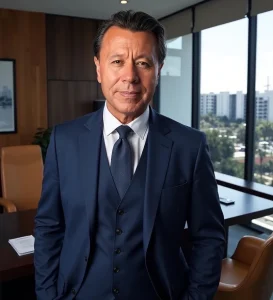
Unlocking New Horizons for Grant Management in Tribal Lands
Breaking away from traditional competition, grant management on Tribal Lands often takes place in a “red ocean” of limited funding pools, complex compliance rules, and competing priorities. Traditional approaches focus heavily on meeting minimum requirements for reimbursement or recovery. But what if we could shift to a Blue Ocean Strategy creating new value by aligning federal recovery programs with Advance Funding through Regulated Funding Firms for long-term Tribal resiliency and sustainability goals?
ARC does not just focus on Post Disaster Grant Management, but it also applies its Blue Ocean Strategy approach knowhow to pre-disaster grant management, helping Tribal nations build resilience before disasters strike. By strategically aligning FEMA’s Hazard Mitigation Grant Program (HMGP), Building Resilient Infrastructure and Communities (BRIC), and developing opportunities with the Department of Energy (DOE), Department of Interior (DOI) and the United Sates Department of Agriculture Rural Economic Development programs, and other pre-disaster opportunities with long-term Tribal sustainability goals. This way communities can invest with Advance Funding through Regulated Funding Firms in infrastructure hardening to withstand future hazards, develop community preparedness programs rooted in cultural traditions and modern best practices, not only by creating nature-based solutions that both protect the Tribal lands environment and reduce disaster risk but also an opportunity to build a resilient grant pipeline, reducing reliance on reactive funding and shifting toward proactive community protection.
A direct link to FEMA Public Assistance (PA) program, typically seen as a disaster recovery tool, can become cornerstone for proactive, future -focused Tribal planning resiliency projects incorporating hazard-mitigation upgrades into repair work with specific focus in sustainability standards. Leveraging Public Assistance (PA) flexibility for energy-efficient materials, clean fuels power generation infrastructure, and climate adaptive design. The capacity building approach is key by using PA reimbursement documentation to strengthen Tribal grant management systems for future HUD, CDBG-DR or infrastructure grants.
The Blue Ocean opportunities for Tribal communities are bounty through ARC’s Task Orders with Advance Funding through Regulated Funding Firms. Instead of competing in the crowded space of short-term recovery funds, Tribal nations can use Blue Ocean thinking to create new value propositions integrating federal streams by pairing FEMA PA funding with HUD CDBG-DR, DOI, DOE and USDA rural programs for holistic recovery. Efforts can concentrate in building partnerships by forming alliances with universities, nonprofits, and private firms to bring technical expertise and co-founding. The showcasing of cultural sustainability is essential when designing projects that preserve Tribal heritage and ecological balance while meeting federal resiliency mandates. Sustainability as a competitive advantage is a viable approach that transforms compliance-driven projects into community -driven solutions such as sustainable base-load energy microgrids for Tribal facilities, climate-resilient housing, schools, health centers, enhanced sports academy facilities, critical infrastructure and nature-based flood and wildfire mitigation strategies.
By the reframing of FEMA Public Assistance now directly linked with federally recognized Tribal lands not just as a disaster recovery mechanism but as a platform for innovation, Tribal nations can move beyond competition for scarce resources thus ensuring access to programs that support both immediate recovery and long-term community strength.
ARC’s Blue Ocean Strategy approach unlocks new paths for resilience, sustainability, and sovereignty for pre-disaster and post-disaster. Now is the time for Tribal leaders to embrace our Blue Ocean approach. Begin by mapping of pre-disaster federally funded DOE, DOI, USDA Rural Economic Development programs and FEMA PA opportunities against long-term sustainability goals, building cross-sector partnerships, and developing a comprehensive Tribal resilience strategy. The future of Tribal lands depends not just on recovery, but on creating new spaces where innovation, culture, and sustainability thrive together. For more information, please call us TODAY or email us at ArcNews@alternativerecoveryconsulting.com
About the Author:

Hernando a graduate of UCONN with a postgraduate degree from the Insurance Institute of America, is a Court qualified storm damage assessment expert witness, former General Adjuster serving the National Flood Insurance Program is a dynamic leader with extensive experience in Commercial and Residential insurance property claims having served in both sides of the fence, natural disaster response, and strategic planning. With 42 years of expertise, he has guided organizations through high-stakes scenarios, including catastrophic events, by designing and executing effective response strategies that ensure business continuity and customer support. A co-author of ARC’s Blue Ocean Strategy implementation, Hernando has a proven ability to identify innovative solutions and untapped opportunities, driving operational excellence and sustainable growth from a unique and extraordinary perspective. He is passionate about fostering resilience through immediate critical emergency response solutions, mitigating risks, and delivering proactive storm hardening strategies that help organizations navigate the complexities of natural disaster recovery and beyond.
